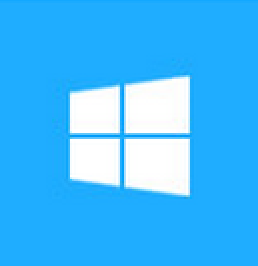Microsoft to bring back Start menu, windowed apps to Windows

With another update to Windows 8.1, Microsoft will be bringing back a Start Menu and windowed Metro-Style/Modern apps, Microsoft officials confirmed during the company's Build 2014 show.

Terry Myerson, the Executive Vice President of the operating system group, told attendees of the Build keynote on April 2 that Microsoft will be making these tweaks to Windows in an update to Windows 8.1 that will be available at some point in the future.
Microsoft is making its first update to Windows 8.1 available to customers starting today. It wasn't clear from Myerson's remarks if he was referring to an Update 2 later this year or to Windows 9, which we Microsoft watchers have heard is a Spring 2015 deliverable. Microsoft officials have not publicly confirmed that an Update 2 to Windows 8.1 is in the cards. My sources have said that an Update 2 was a possibility for fall 2014.
Sources of mine had said Microsoft would talk about Windows futures at this week's Build show, offering developers some guidance about what to expect as the company moves toward Windows 9, codenamed "Threshold."
Update: Myerson, in a follow-up blog post, said he was describing futures that would be in "the next iteration of Windows." Again, that's intentionally vague, and could mean either a second Windows 8.1 update or Windows 9/Threshold.
Build 2014
Myerson, in an unusual but welcome return to Microsoft's heritage of offering developers roadmap and futures information, also told Build attendees that Microsoft plans to allow developers to build "Universal Apps" that will work across Windows Phone, Windows and Xbox devices. Given that the Xbox One operating system is based on Windows 8, it's not too surprising that this cross-Windows portability could be possible.
These Universal Apps are applications that are built using a common Windows Runtime that is shared across these different flavors of Windows. Developers will be able to reuse more code but still target their apps for different form factors and experiences.
Universal apps are a stepping stone on Microsoft's path toward bringing its Windows versions closer together, in terms of programming interfaces, toolsets and user interfaces.
Myerson also disclosed that the company plans to make Windows free in the future for Windows phones, tablets and PCs with screen sizes of 9 inches or smaller, as well as on "Internet of Things" devices. Again, he didn't say when this would be the case and whether he was talking about OEM pricing, end-user pricing or both.
Myerson didn't show the actual design of the new windowed app or Start Menu features. (He did show mockups, which were supposedly among multiple designs under consideration.) Both of these have been rumored to be Windows 9 deliverables. Whatever the Start Menu does look like, I'm betting it won't be anything like the Start Menu that is part of older Windows versions.